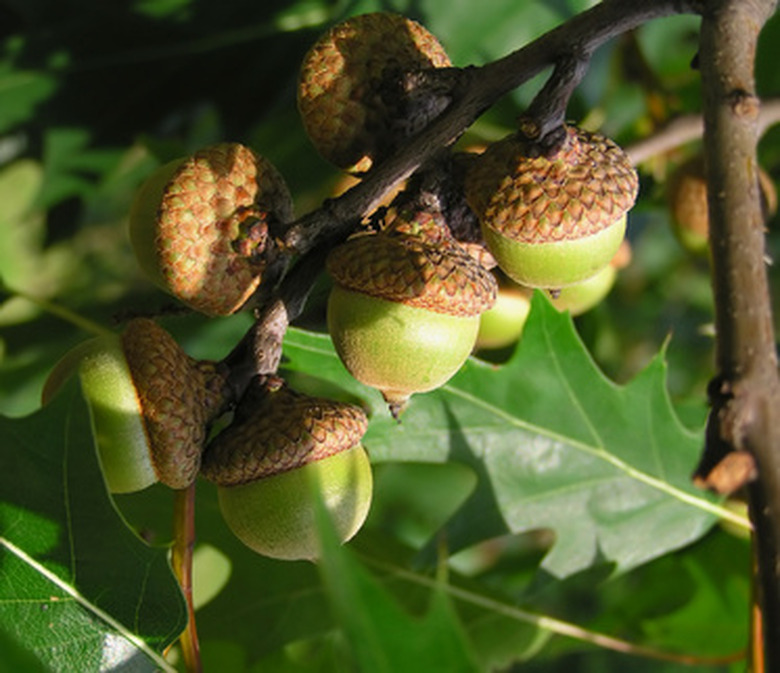Oak Trees Of Georgia
The State of Georgia is home to several varieties of oak trees (genus Quercus). Oaks are a common features in forest locations, as landscape trees, and in public spaces and home settings. Many oak species are of economic importance, sold as ornamentals, hardwood timber and as a source for tannins, dyes and corks. Some oak species exhibit fall color and others remain green throughout the year. Given the proper site to develop, oaks are a recommended landscape tree.
Live Oak
Native to the eastern United States, the majestic live oak (Quercus virginiana) is Georgia's state tree. It often is found on the coastal plains and up to 100 miles inland. Live oaks are large trees, 60 to 80 feet tall, with low-drooping branches that reach a spread of 60 to 100 feet. An evergreen tree, live oaks have simple, oval-elliptical leaves that are 1 to 5 inches long and fall in the spring while new leaves emerge. Growing in Georgia zones 7b, 8a and 8b, live oaks prefer full sun and grow on a variety of soil types, except for Peidmont clays. Slow growers, live oaks tolerate dry and moderately wet conditions, and have good wind resistance. Live oaks often are seen planted along streets, in parks and as specimen trees, but they require large areas. Ferns and Spanish moss often are seen adorning stately live oaks.
- The State of Georgia is home to several varieties of oak trees (genus Quercus).
- Growing in Georgia zones 7b, 8a and 8b, live oaks prefer full sun and grow on a variety of soil types, except for Peidmont clays.
Turkey Oak
Turkey oaks (Quercus laevis) are irregularly shaped trees with a narrow canopy of leaves commonly seen 20 to 30 feet tall but are capable of reaching 60 feet. Turkey oaks are native to the eastern United States and are found in the sandhills of the upper coastal plains of Georgia. The name "turkey oak" comes from its three-lobed leaves, which resemble the foot of a turkey, according to University of Georgia extension. Turkey oak foliage is red in the fall. Its acorns provide food for woodland animals. Turkey oaks prefer full sun and grow on variety of soils.
Georgia Oak
Georgia oaks (Quercus georgiana) are small, deciduous trees that grow 20 to 40 feet tall and with a 15 foot spread. The leaves are small, with three to six lobes; they turn bright red in the fall. Georgia oaks grow in rocky, dry areas of Georgia zones 7a, 7b and 8a. Georgia oaks are well-suited as specimen trees in small yards or along streets.
- Turkey oaks (Quercus laevis) are irregularly shaped trees with a narrow canopy of leaves commonly seen 20 to 30 feet tall but are capable of reaching 60 feet.
- Georgia oaks (Quercus georgiana) are small, deciduous trees that grow 20 to 40 feet tall and with a 15 foot spread.
White Oak
White oaks (Quercus alba) are deciduous trees with an oval to upright form. Growing from 60 to 100 feet tall, white oaks spread 40 to 60 feet wide and make good shade trees. White oaks prefer full sun and well-drained, moist, acidic soils, and grow in Georgia zones 6b through 8b. White oaks are probably the most common oak tree in north Georgia, according to University of Georgia extension literature.
References
- "Landscape Plants for Subtropical Climates"; Bijan Dehgan; 1998
